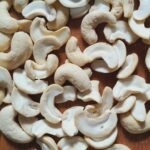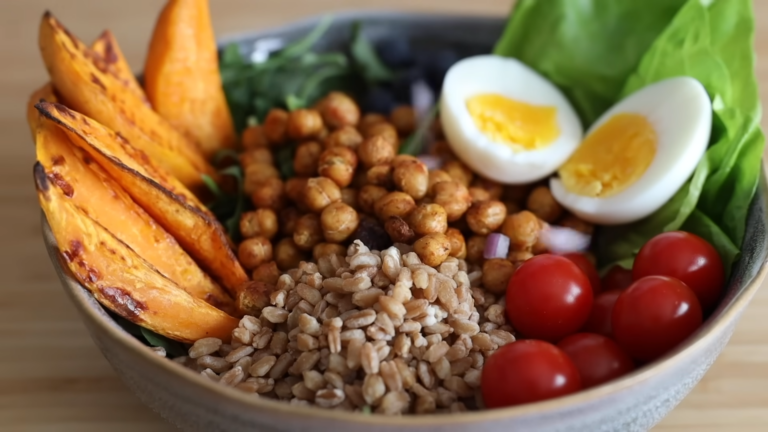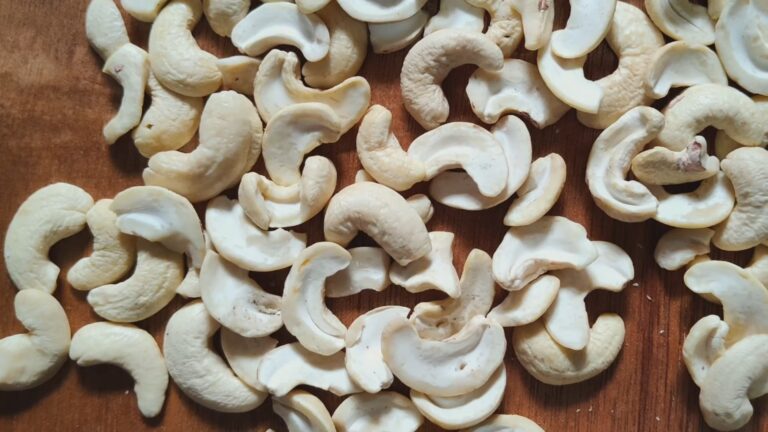It is challenging to find out the Fruit that starts with S. It’s not easy to collect the Fruit list starting with S because you need to do proper research that takes your time and energy.
We have also written an article on Fruit that starts with N and Vegetables that begin with C. Kindly review it.
But you won’t be worried because I don’t want to waste your precious time finding fruits that begin with s.
We have made a list of fruits that start with the letter s, with detailed information and pictures of each Fruit.
Page Contents
- 1 Quick Overview Of The List Of Fruit That Starts With S
- 2 List Of Fruit That Starts With S
- 2.1 1. Safou Fruit
- 2.2 2. Snake Fruit
- 2.3 3. Santol Fruit
- 2.4 4. Sapodilla Fruit
- 2.5 5. Star Apple Fruit
- 2.6 6. Soncoya Fruit
- 2.7 7. Star Fruit
- 2.8 8. Strawberry Guava Fruit
- 2.9 9. Strawberry Fruit
- 2.10 10. Sugar Apple Fruit
- 2.11 11. Sugar Baby Watermelon Fruit
- 2.12 12. Sweet Orange Fruit
- 2.13 13. Sweet Pepper Fruit
- 2.14 14. Sweet Lemon
- 2.15 15. Sour Plum
- 2.16 16. Stinking Bishop Pear
- 2.17 17. Salal
- 3 Final Thoughts
Quick Overview Of The List Of Fruit That Starts With S
1. Safou Fruit 2. Snake Fruit 3. Santol Fruit 4. Sapodilla Fruit 5. Star Apple Fruit 6. Soncoya Fruit 7. Star Fruit 8. Strawberry Guava Fruit 9. Strawberry Guava Fruit 10. Sugar Apple Fruit 11. Sugar Baby Watermelon Fruit 12. The Sweet Orange Fruit 13. Sweet Pepper Fruit 14. Sweet Lemon 15. Sour Plum
List Of Fruit That Starts With S
1. Safou Fruit
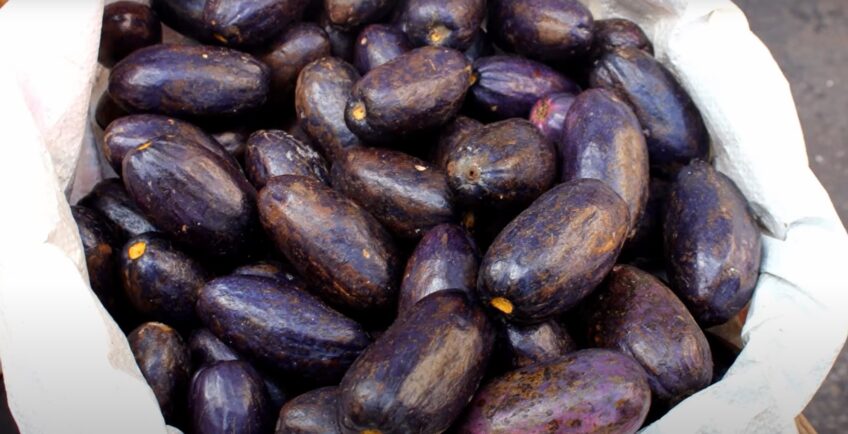
Safou Fruit is a green tree, which is available in the rainy season. They belong to the family of Burseraceae and grow in wet and sub-humid climate. The flower of this tree is small and borne in big extremity panicles. If you want to know that the fruit is ripe or not, you can easily recognize it with color. The mature safou fruit color is black and blue.
They are eaten raw, cooked, and roasted.
Origin:
The Safou Fruit is native to Africa and can be found in Cameroon, Gabon, and Nigeria.
Scientific Name:
The scientific name of Safou Fruit is Dacryodes Edulis.
Height:
The height of this tree depends if you have decided to plant them in the forest, the size will reach 20-30 m; otherwise, in the orchards, it just comes to 12 m.
Why should you grow the Safou tree:
It would be best to grow a Safou tree because they are rich in protein, fat, minerals, vitamins, and amino acids.
Health Benefits Of Bush Pears:
- They reduce constipation.
- Bush pears will help you lower blood pressure and stroke risk when the stroke occurs, so your brain will get blood properly.
- Safou fruit has essential minerals such as calcium and phosphorus that keep our bones and teeth healthy.
2. Snake Fruit
Snake fruit is a plum tree species, which produce fruit in both summer and winter season. These fruits are rich in protein, beta-carotene, vitamin-C, and calcium, which keep your heart healthy. If you are from Australia, you are unlucky because Australia does not import fresh Salacca fruit from other countries.
Origin:
The snake fruit is native to Indonesia, but they mostly raise and manufacture around southeast Asia.
Scientific Name:
The scientific name of snake fruit is Salacca Zalacca, and they are also known as Salak.
How to pack snake fruit:
- It would be better if you pick the snake fruit that has a yellowish-brown skin color.
- Try to select the snake fruit that has oval-shaped.
- Press the snake fruit gently. If you feel it’s soft, won’t pick it.
How do you store snake fruit:
It’s unnecessary to store your snake fruit in the refrigerator. You can keep at room temperature but make sure to eat snake fruit before ending the day.
3. Santol Fruit
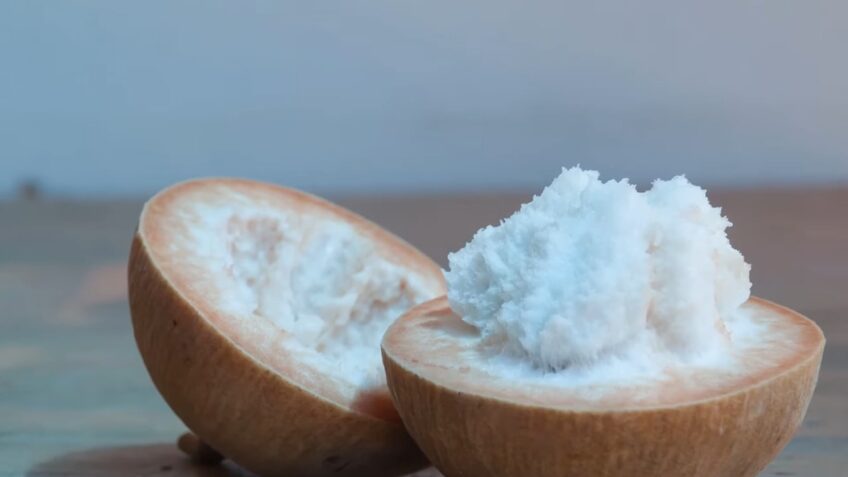
The Santol is a tropical fruit that tastes very sweet, but the Santol taste depends on maturity and variety. If it’s mature and ripe, then it will taste sweeter. If it’s unmatured, the flavor will be less sweet. The fresh and sweetest Santol can recognize easily because of their taste like candy.
Origin:
Santol is native to southern India, and it can also found in Southeast Asia.
Scientific Name:
The scientific name of Santol is Sandoricum koetjape.
Santol Fruit Uses:
The leaves and the bark of Santol fruit are used for medical purposes. Some chemicals are extracted from the Santol, which has anti-cancer properties.
How do you plant santol seeds:
While planting the Santol seeds, you need to potting containers and carefully place Santol seeds on a dug hole and cover it adequately with soil.
How do you preserve ripe Santol:
To make a santol preserve, you have three options.
- You need to blanch the Santol for ten minutes and peel them.
- Cut your Santol into halves and remove the seeds.
- Soak in water for 2-3 days by changing the water every day.
- Place it in dry bottles and remove air bubbles.
- Sterilize the same bottle for 25 minutes in the boiling water.
This is the first option. If you want the other two options, try Santol preserve (Option #2 and #3).
4. Sapodilla Fruit
The shape of the sapodilla flowers is small and egg-shaped, which has a cream color. When this fruit is ripe, then the condition becomes brown color. The taste of the sapodilla fruit is sweet and juicy, just like a pear, an edible fruit.
Origin:
The sapodilla fruit is native to southern Mexico, the Caribbean, and Central America.
Scientific Name:
The scientific name of sapodilla fruit is Manilkara zapota. The other words for this fruit are Chikoo, chico, chicle.
What is sapodilla fruit good for:
The Chikko has a fair amount of vitamin C that strengthens our intestines and boosts our immune system.
Are sapodilla seeds toxic:
Yeah, But it’s toxic to mice and rats.
Does eating Chikoo increase weight:
Eating Chikoo will help you get rid of extra fat and weight, and they will help boost our body metabolism.
5. Star Apple Fruit
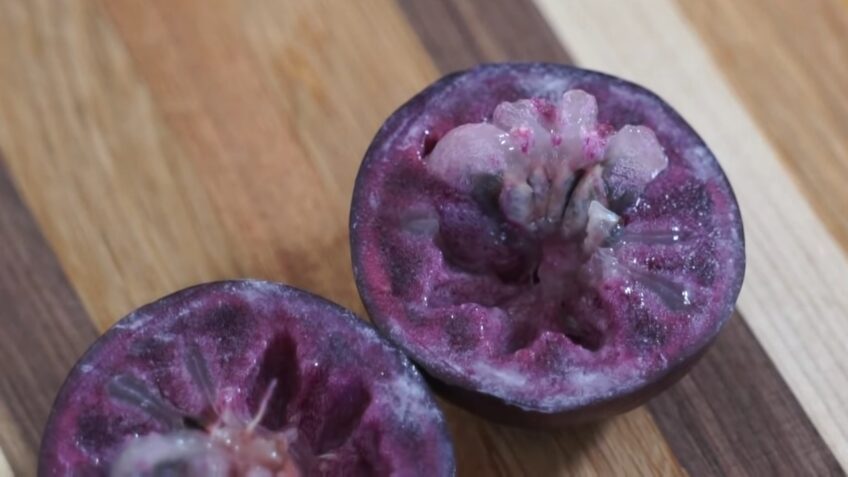
Star apple is the tropical tree of Sapotaceae. The Sapotaceae family belongs to the order Ericales. These fruits grow quickly and reach up to 20 m in height. The skin of the star apple is purple and green, which has a super sweet taste. The reason they are called star apple they have the same resemblance as a star.
Origin:
The star apple is native to West Indies and Central America.
Scientific Name:
The scientific name of the star apple is Chrysophyllum cainito.
Skin Covered With:
The skin of the star apple is covered with latex and is not edible.
Is star fruit bad for kidneys:
It’s not bad for kidneys, but it may be bad for those who already have kidney disease.
How long does star apple last:
It will be better if you eat fresh star apple because their taste will be sweet, but once they are old, it will change their preference daily. If you store star apple properly, they last for 2-3 weeks.
6. Soncoya Fruit
It is an edible fruit used in traditional medical practice. The leaves of this fruit are large and hairy. The fruit of Soncoya is round in shape and 15-20 cm wide. The skin of this fruit tough and has many seeds with the germination of 1-6 months.
Origin:
The Soncoya fruit is native to Mexico, Centra America, and South America.
Scientific Name:
The scientific name of Soncoya fruit is Annona Purpurea. Some common words used for Annona Purpurea are sincuya, and cabeza de negro.
Height:
The tree height of Soncoya fruit is 6-10 m, which is also available in the local market of the Philippines and other Asian countries.
7. Star Fruit
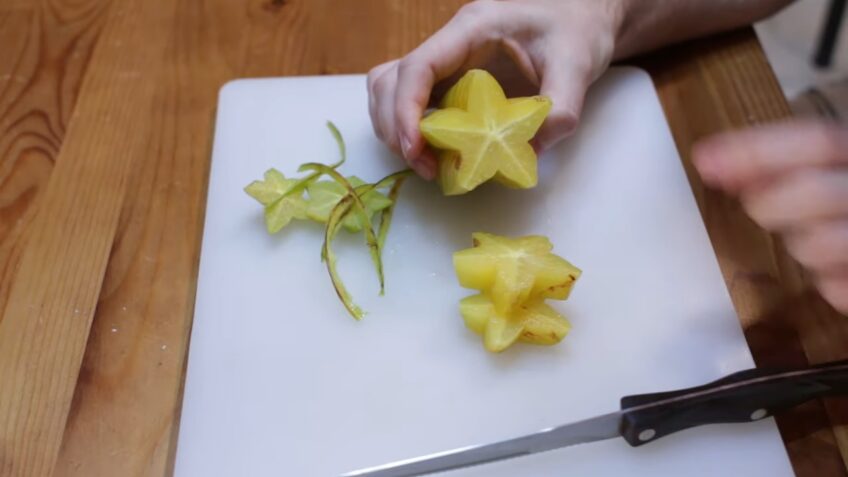
This tree is cultivated in tropical seasons all over the world. The taste of the star fruit has a tart sour and oxalic acid odor. The oxalic acid is the organic compound. Is it challenging to find out the taste of star apple? The taste of star apple compared to the combination of apple, grape, and citrus. The reason why this fruit called star fruit because it looks like a real star.
Origin:
The star apple is native to Southeast Asia, the Caribbean, and East Asia.
Scientific Name:
The scientific name of star fruit is Averrhoa carambola.
Benefits Of Eating Star Fruit:
- It is a good source of healthy plant compounds and has various health benefits.
- The star fruit has sugar, which reduces inflammation.
- Star fruit has a fair amount of vitamins, minerals, and nutrients.
Side Effect Of Eating Star Fruit:
- They have high oxalate content that may cause kidney problems. That’s why if you already have kidney problems, you should avoid star fruit and its juice.
How To Eat:
- If it’s ripe, rinse the fruit underwater.
- Cut off the end and remove the spoiled part.
- Sliced it and remove the seeds. Now enjoy eating star fruit.
8. Strawberry Guava Fruit
Strawberry guava is a small tree that belongs to the family of Myrtaceae. Strawberry guava fruit is edible, and you can use it to make juice and mix it in other food products. The strawberry guava is self-pollinating. If you want to eat a guava, make sure your stomach is not empty.
Origin:
The strawberry guava is native to America and southeastern Brazil.
Scientific Name:
The scientific name of strawberry guava is Psidium cattleianum. It’s also called purple guava and Chinese guava.
Tree Height:
The strawberry guava tree grows to a height between 6-14 feet.
Can we drink water after eating guava:
If you are thirsty, don’t drink water after eating guava. It recommended that drinking water after an hour of eating guava. It would be better if you drink water before swallowing the guava.
Strawberry guava fruit size:
They are tiny fruit that has 2-4 cm in diameter. The shape of the strawberry guava is round.
9. Strawberry Fruit
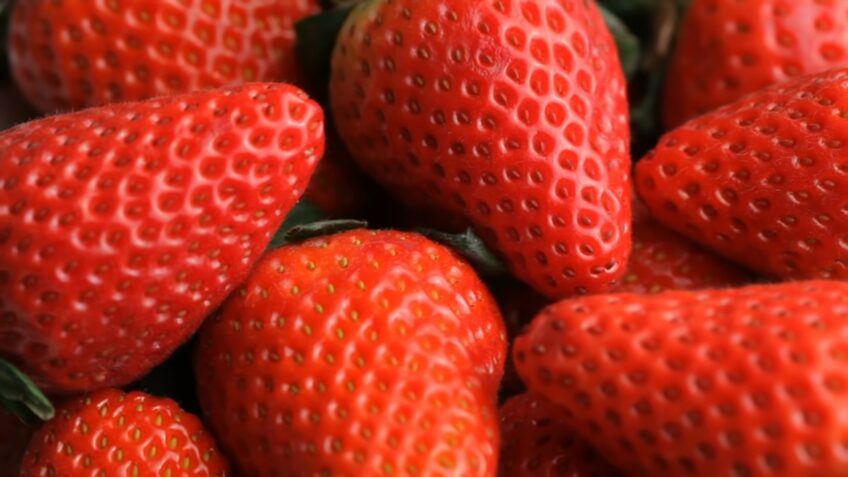
Strawberry is cultivated all over the world. The Strawbery have bright red colors that are very sweet and have a good vitamin C source. The Strawberry is perfect for the skin, and it improves Complexion, Cleanses, and Tones. Applying Strawberry to your skin will give you a good result.
Origin:
The Strawberry is native to North America and India.
Scientific Name:
The scientific name of Strawberry is Fragaria × Ananassa.
Where do strawberry seeds come from:
The seeds available outside of a strawberry are the plant’s ovaries, which are also called achenes.
Is Strawberry good for pimples:
Actually, the Strawberry is high in vitamin C, which is known as an anti-inflammatory. It helps to reduce inflammation.
How long do strawberries last:
It depends where you are storing your Strawberry. If you don’t have knowledge about how long Strawberry last and which is the best place to store Strawberry, then read here about Strawberries shelf life.
10. Sugar Apple Fruit
The sugar apple is a fruit that grows in tropical climates. They have a great source of dietary fiber, which is very good for diabetes. Sugar apple is high in energy and has a good source of vitamin c and magnesium. Sugar apples are also used in the ice cream. While eating sugar apple, it sounds delightful.
Origin:
The sugar apple is native to southeastern Mexico.
Scientific Name:
The scientific name of sugar apple is Annona squamosa.
Tree Height:
The tree of the sugar apple grows up to 10-20 feet in height.
Is Sugar Apple poisonous:
The seeds, bark, and leaves of the sugar apple are poisonous.
How long does it take for a sugar apple tree to grow:
The sugar apple takes 30 days more than it to germinate. The size of the standard apple tree is 30-40 feet tall.
11. Sugar Baby Watermelon Fruit
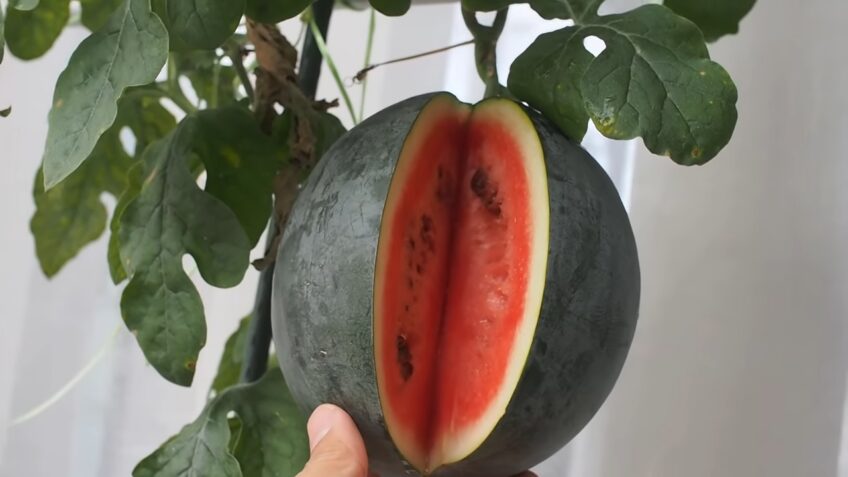
Sugar baby watermelon fruit is a type of picnic watermelon. The picnic watermelon is large in size that usually has 7-20 kg weight or more than it. The sugar baby was introduced in 1956 that produces very small fruits that have 7-8 inches size, which can easily be put in the fridge or picnic basket.
Origin:
The sugar baby watermelon fruit is native to America and Flordia.
Scientific Name:
The scientific name of sugar baby watermelon is Citrullus Lanatus.
How do you fertilize a Sugar Baby watermelon:
It is recommended to use straw or newspaper in a 3-4 inch layer throughout the sugar baby melon plant. It would be better if you fertilize the watermelon in the amount of 1 1/2 pounds.
How do I make my watermelon sweeter when growing:
If you want to grow your watermelon, that becomes sweet, so keep the warm soil is the best option to keep your watermelon sweeter. Cover the black color of plastic over the ground to warm the ground and suppress seeds.
12. Sweet Orange Fruit
The sweet orange is the fruit of various citrus species that belong to the family of Rutaceae. There are different types of oranges, but Flordia orange is considered as sweet orange. The Minneola Tangelos, Murcott Honey Tangerines, are also sweeter, but each has its unique characteristic and different juicy taste.
Origin:
The sweet orange is native to China and can also found in Northeast India and Myanmar.
Scientific Name:
The scientific name of sweet orange is Citrus X Sinensis.
What are the four original citrus fruits:
There is four original citrus fruit all over the world, which are pomelo, citron, mandarin, and papeda.
13. Sweet Pepper Fruit
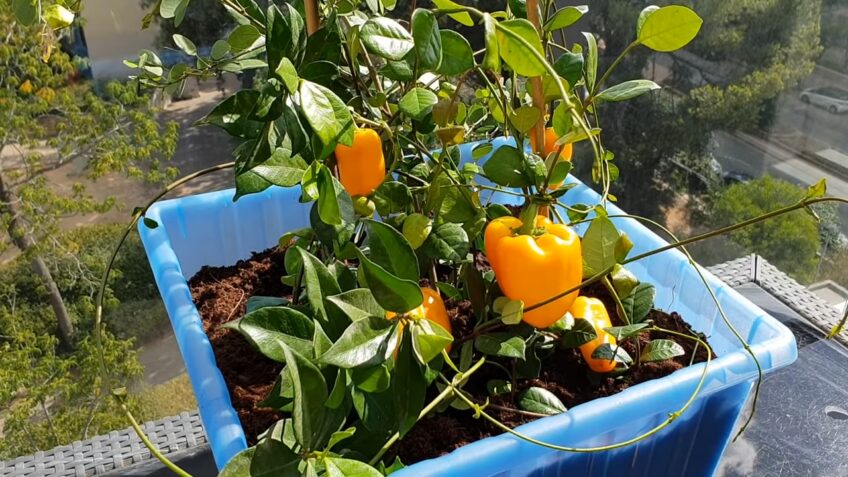
The sweet pepper is a fruit that contains seeds. Many people have confusion that it’s a fruit or vegetable. According to botany, some plant parts are considered vegetables, and sweet pepper is considered a fruit. The sweet pepper comes in different colors, such as yellow, green, blue, and red.
You can make edamame and roasted red pepper combine but make sure you know how long does edamame last.
Origin:
The sweet pepper is native to Mexico, Central America, and northern South America.
Scientific Name:
The scientific name of sweet pepper is the Capsicum Annuum Group.
Sweet Pepper Good For:
Bell peppers are very rich in vitamins, minerals, and antioxidants. That’s why they have many health benefits. Some of them are under below.
- Improve the health of the eye.
- Reduce the risk of several chronic diseases.
- May help in reducing cholesterol and lowering blood sugar.
14. Sweet Lemon
Sweet lemon usually refers to the group of citrus that has a very low amount of acid pulp and juice. The sweet lemon is also called sweet lime, sweet Limetta, and Persian lime. Due to the acid in citrus, if you drink lemon water regularly on a daily basis so it may cause tooth decay.
Origin:
The sweet lemon is native to Iran and can also found in Mediterranean Basin.
Scientific Name:
The scientific name of sweet lemon is Citrus limetta.
Health Benefits Of Sweet Lemon:
- Lemon contains a high amount of vitamin C and fiber that are very beneficial for our health.
- Sweet lemon control weight.
- If you have stones in your kidney, lemon juice will prevent kidney stones.
- They will also help you to prevent anemia.
- Lemon is considered best for their taste and smell.
15. Sour Plum
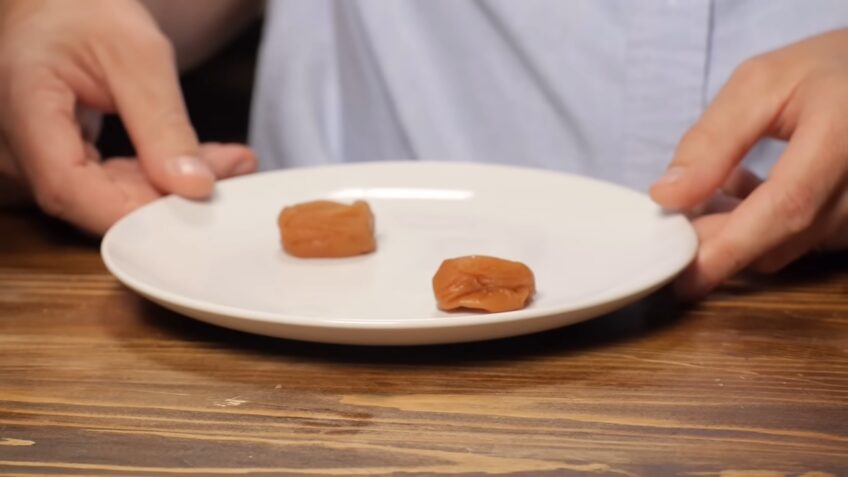
This is the last fruits that start with S in our list, Sour plums are the main component of a tangy Georgian sauce called Tkemali. The Tkemali is made from different varieties and colors, such as red and green. You can eat sour plums, and it’s mostly enjoyed in the middle east and Asia. They are round in shape and are wrinkled once becoming old.
Origin:
The sour plum is native to western Asia.
Scientific Name:
The scientific name for plum is Prunus Subg Prunus.
Tree Height:
The tree height of the cherry plum is about 15-20 feet.
How long does it take for a cherry plum tree to grow:
The cherry plums take 1-2 years to old, while the roots of the cherry plums take a bit longer(2-4 years). The sour cherry is also known as cherry plums and pie cherries. Once you transplant cherry plum in the garden, it takes 3-5 years to produce the fruit.
16. Stinking Bishop Pear
Another fruit that starts with the letter S is the stinking bishop pear. This fruit gets its name from Frederick Bishop who owned the farm with this pear was first cultivated.
Origin:
Originated in Gloucestershire, England, in the 19th century. It is named after the local Stinking Bishop cheese, which is also known for its pungent odor.
Scientific Name:
The scientific name for Stinking Bishop Pear is Pyrus communis.
Tree Height:
Stinking Bishop Pear trees can grow up to 15 to 20 feet tall and wide, depending on the growing conditions. They require well-draining soil and full sun exposure to thrive.
Benefits:
Stinking Bishop Pear is an excellent source of dietary fiber, vitamin C, and potassium. The fiber in this fruit can promote digestive health and help regulate blood sugar levels. The high levels of vitamin C in Stinking Bishop Pear can boost the immune system and protect against infections.
17. Salal
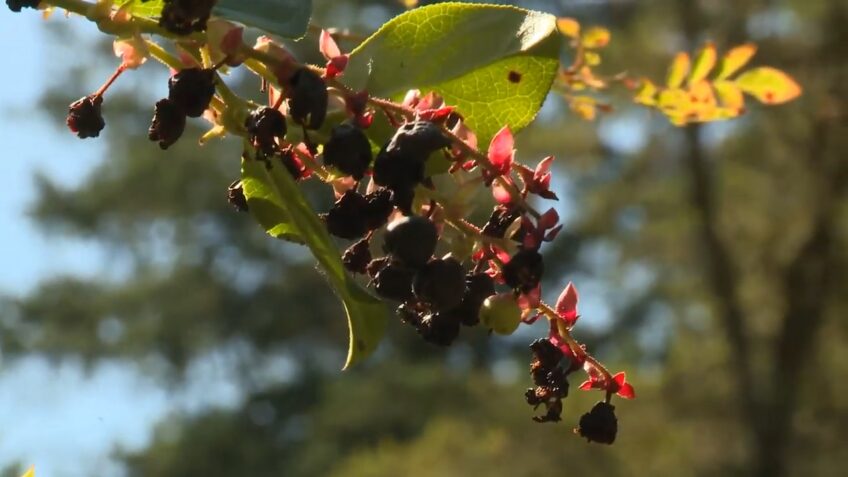
The berries of a Salal plant look very similar to blueberries. These berries are considered to have many health benefits.
Origin:
Salal berries grow on evergreen shrubs that are found in coastal regions of North America, from Alaska to California. Indigenous peoples of the Pacific Northwest have traditionally used salal berries for food, medicine, and crafts.
Scientific Name:
The scientific name for Salal is Gaultheria shallon.
Shrub Height:
Salal shrubs can grow up to 6-15 feet tall and wide, depending on the growing conditions. They prefer moist, acidic soils and partial shade.
Benefits:
Salal berries are a rich source of antioxidants, including vitamin C, vitamin E, and anthocyanins. The antioxidants in Salal berries can help protect against cellular damage caused by free radicals and may lower the risk of chronic diseases such as cancer and heart disease. They are also a good source of dietary fiber, which can help promote digestive health.
Final Thoughts
That’s all about the fruit that starts with s. This article is written on research-based, and I have explained every and each vegetable in detail with its benefits and scientific name.
I have explained fifteen fruits with s, but if you think we have missed your favorite one, drop the comments. We will add them and update our article.
Which one is your favorite on this list? If you ask me the same question, then I will definitely choose strawberry.
Dr. Sophia Harrison, an authoritative voice in the field of medicine, is not only the founder of the illustrious Fischer Institute but also its main content curator, bringing a treasure trove of knowledge and expertise to her readers daily.
Also Read:
- 20 Popular Vegetables Beginning With C - Detailed…
- 10 Fruit That Starts With F - Flavorful Fruits A to Z
- Fruit That Starts With N - Tasty and Nutritious Delights
- Fruit That Starts With v - Rare and Delicious
- Fruit That Starts With H - Healthy Letter Diet
- List of Vitamins for Weight Gain: Boost Your Metabolism








